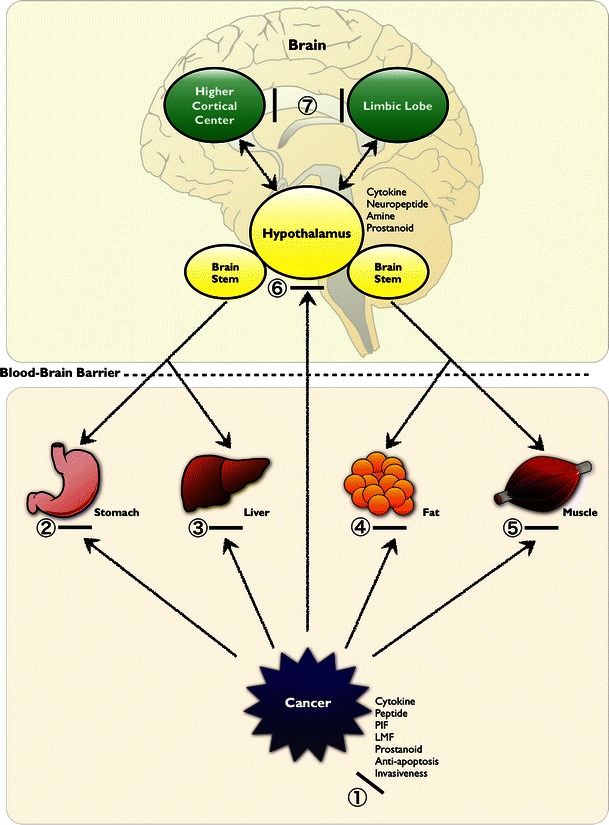Fig. 3.

The potential modalities of pharmacological intervention of cancer anorexia-cachexia syndrome. Agents were classified as those established (first-line) or those unproven/investigational (second-line), depending on their site or mechanism of actions. ①, inhibitors of production/release of cytokines and other factors; ②, gastroprokinetic agents with or without antinausea effect; ③, blockers of Cori cycle; ④ ⑤, blockers of fat and muscle tissue wasting; ⑥, appetite stimulants with or without antinausea effect; and ⑦, anti-anxiety/depressant drugs. These agents should be selected on an individual basis according to the cause of cachexia or the state of the patient. *The precise actions of statins on skeletal muscle still remain controversial. First-line treatments: glucocorticoids ① ⑥, progesterones ① ⑥. Second-line treatments: cannabinoids ⑥, cyproheptadine ⑥, branched-chain amino acids ⑤ ⑥, metoclopramide ② ⑥, eicosapentanoic acid ① ④ ⑤, 5′-deoxy-5-fluorouridine ①, melatonin ①, thalidomide ①, β2-adrenoceptor agonists ⑤, non-steroidal anti-inflammatory drugs ① ⑥, others anabolic steroids ⑤, pentoxifylline ①, hydrazine sulfate ③, statin ① ⑤*, angiotensin-converting-enzyme inhibitor inhibitor ⑤, selective androgen receptor modulator ⑤. Source: [99] with modification
